본 post는 국가생명연구자원정보센터(KOBIC) 주관 연세대학교 의과대학 김상우 교수님의 NGS 데이터 분석 기초 강의를 정리한 내용입니다.
Intro
NGS를 이용하여 cancer immune analysis에 대해 알아봅니다. Cancer immune 및 면역항암의 기초, TMB(tumor mutation burden), HLA 및 HLA 변이, neoantigen 분석 등을 알아봅니다.
Cancer Immunotherapy
기본 개념은 host의 immune system을 cancer 제거하는 방향으로 가이드하는 것입니다.
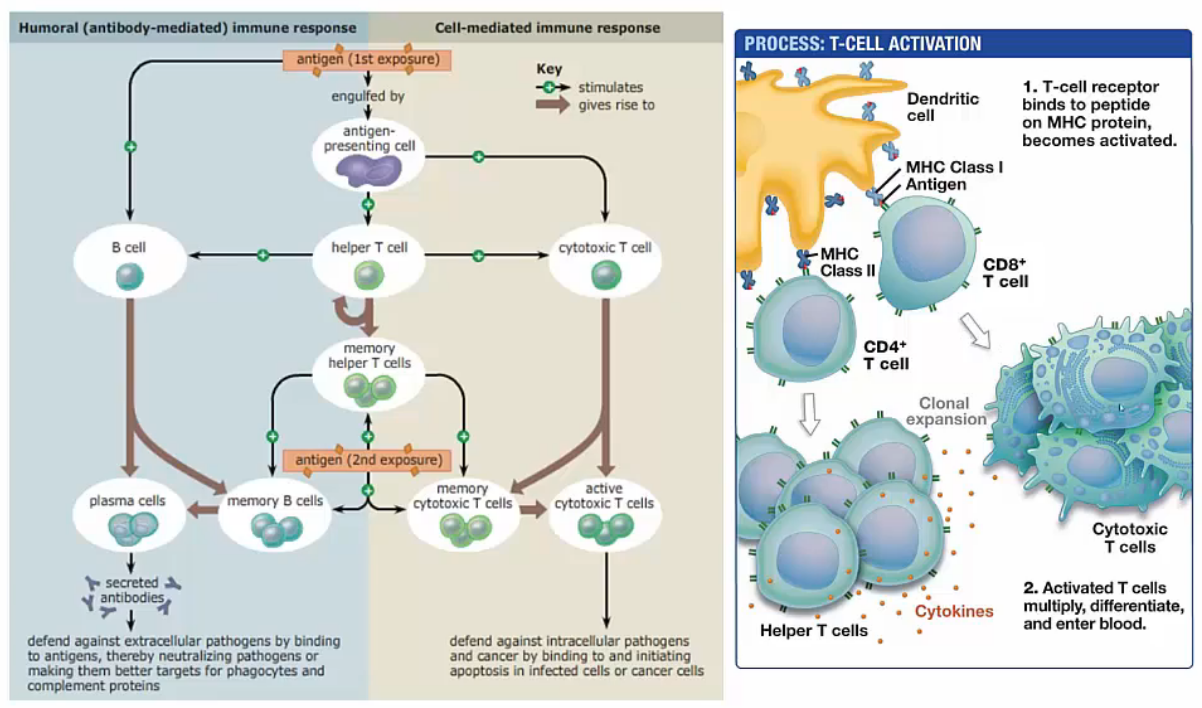 Adaptive Immunity and T-cell Activation
Adaptive Immunity and T-cell Activation
https://www.edwith.org/ngs-data-variation/joinLectures/356132
사람의 몸에 침입한 antigen은 antigen-presenting cell에 의하여 우리 몸이 침입을 감지하고 대응할 수 있도록 알리는 역할을 합니다. Cytotoxic T-cell이 직접 antigen을 공격하는 동시에 helper T-cell이 B-cell로 하여금 antibody를 생성, 배출하도록 리드합니다. 또한 memory T-cell로 하여금 적응면역을 갖도록 합니다.
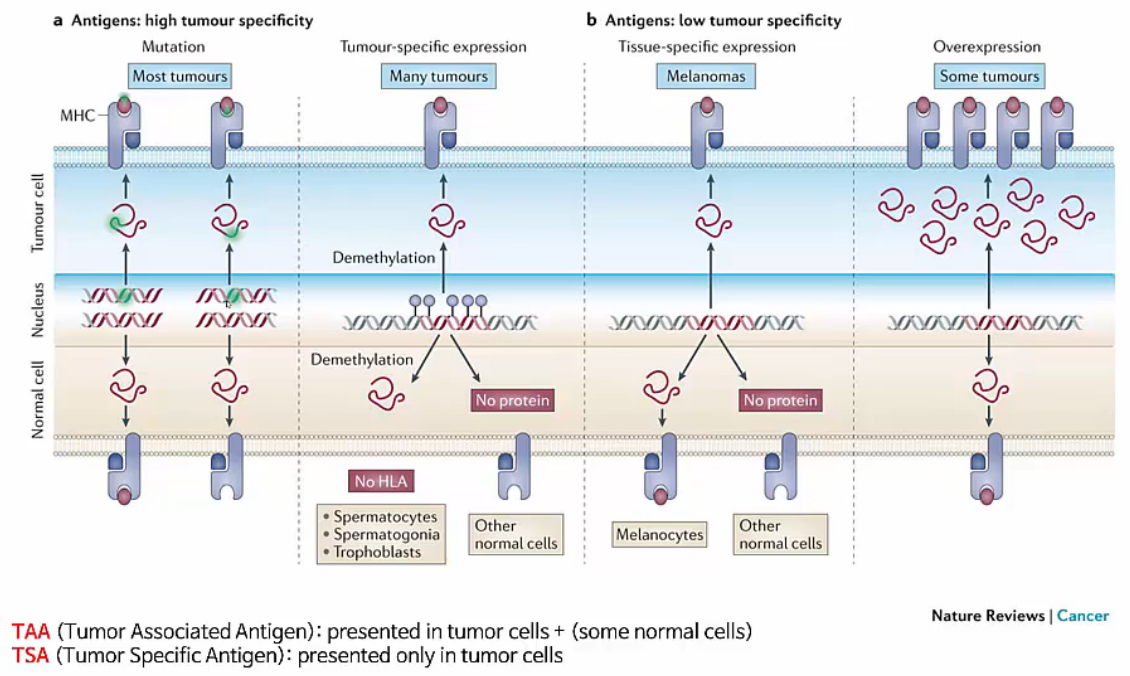 Tumor Antigen
Tumor Antigen
https://www.edwith.org/ngs-data-variation/joinLectures/356132
이러한 immune system을 활용하여 tumor cell을 제거하기 위해서는, normal cell에는 존재하지 않고 tumor cell에만 존재하는 specific antigen을 목표로 삼는 것이 좋습니다. TSA(Tumor Specific Antigen)는 tumor cell에 특이적인 antigen을 의미하며, TAA(Tumor Associated Antigen)는 일부 normal cell에도 존재하지만 대부분 tumor cell에서 나타나는 antigen을 의미합니다.
 Benefits from Cancer Immunotherapy
Benefits from Cancer Immunotherapy
https://www.edwith.org/ngs-data-variation/joinLectures/356132
Immunotherapy는 chemotherapy, genomically targeted therapy와 비교해서 환자의 생존률 향상의 효과를 보입니다. 두 가지 함께 사용하면 효과가 증가하므로 궁극적으로는 이러한 치료방법을 함께 사용하여 환자의 생존률을 높이는데 목적이 있습니다.
TMB (Tumor Mutation Burden)
Immunotherapy의 효과를 예측하거나 대상자를 선정할 때, 가장 좋은 방법은 환자가 immunotherapy의 target antigen(neoantigen)을 얼마나 가지고 있는지 확인하는 것입니다. 하지만 neoantigen만 동정하는 것이 쉽지 않으므로 이를 가늠할 수 있는 보조지표로 TMB를 활용할 수 있습니다.
 Who can benefit from checkpoint inhibitor?
Who can benefit from checkpoint inhibitor?
https://www.edwith.org/ngs-data-variation/joinLectures/356132
B figure에서 100개 이상의 mutations를 가진 환자가 100개 미만 mutations를 가진 환자에 비해 치료결과 생존률이 더 높은 것을 확인할 수 있습니다.
 TMB - from Hopes to Doubts
TMB - from Hopes to Doubts
https://www.edwith.org/ngs-data-variation/joinLectures/356132
TMB는 유용한 지표가 될 수 있지만 TMB를 구할 때, 해석할 때 주의해야 합니다. 어느 정도 score를 기준으로 high/low를 구분해야 하는지, TMB score를 다시 분석해도 재현 가능한지, panel의 target gene region에 대한 depth가 uniform한지 등을 유의해야 합니다.
HLA Typing in the Antigen Processing
 Neoantigen Processing
Neoantigen Processing
https://www.edwith.org/ngs-data-variation/joinLectures/356132
Neoantigen에 의해 어떻게 immune system이 작동하는지 보여주는 그림입니다. Somatic mutation이 AA 변형을 가져와 proteasome에 의해 protein이 degradation 됩니다. 이 때 생성된 neopeptides가 ER로 들어가서 specific하게 MHC와 결합합니다. peptide-MHC는 golgi를 거쳐 cell membrane에 presenting되고 T-cell에 의해 인지되어 immune system이 작동합니다.
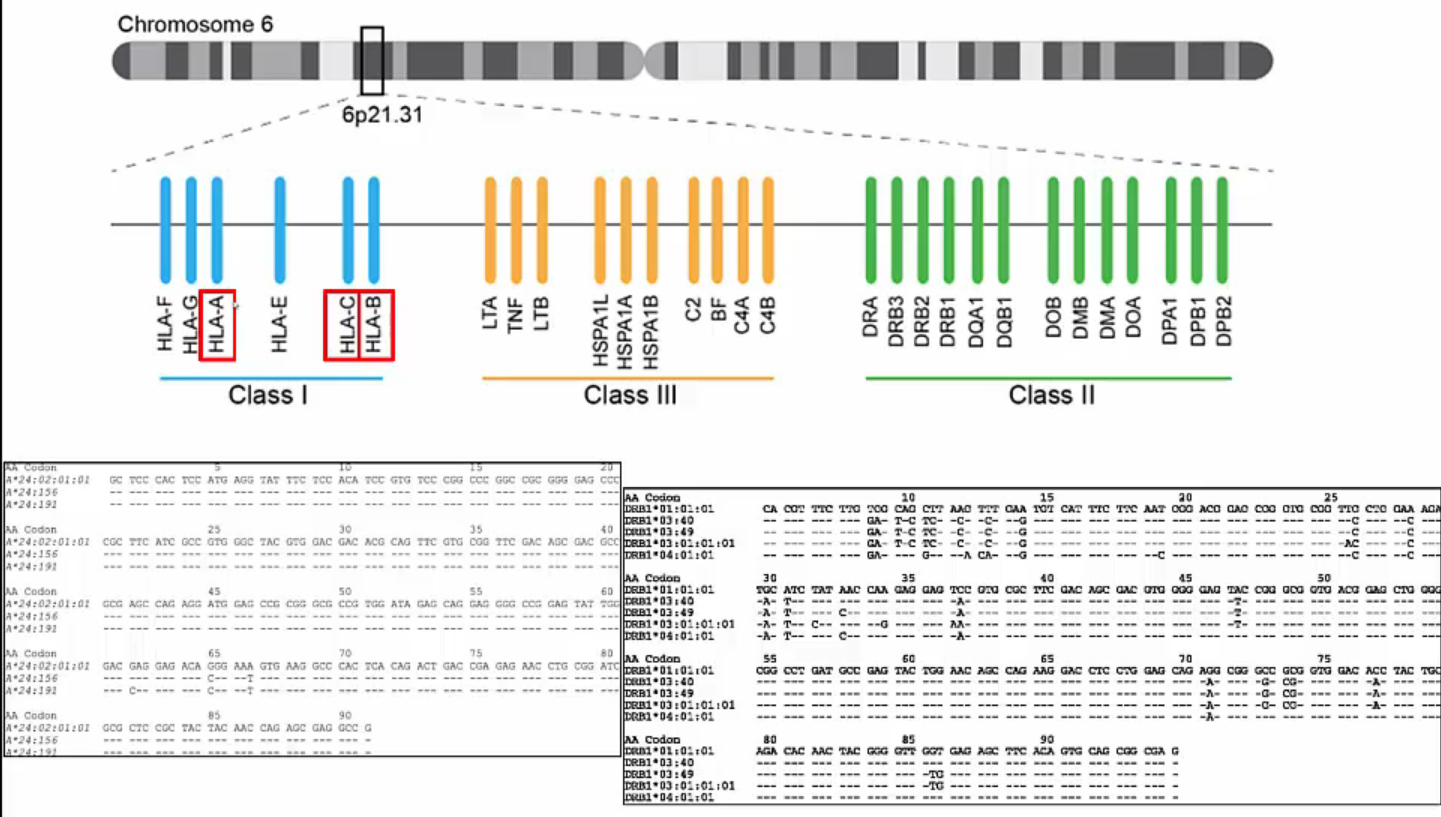 HLA (Human Leukocyte Antigen)
HLA (Human Leukocyte Antigen)
https://www.edwith.org/ngs-data-variation/joinLectures/356132
HLA gene은 6p21.31 위치에 뭉쳐서 존재하고 있습니다. Class I은 cytotoxic T-cell, CD8 T-cell의 immunogenicity를 제공하는 gene들로 구성되어 있습니다. Class II는 helper T-cell, CD4 T-cell의 immunogenicity를 제공하는 gene들로 구성되어 있습니다.
HLA gene은 다른 gene에 비해 훨씬 더 많은 polymorphism을 가지고 있습니다. 즉, 사람마다 HLA gene의 allele이 다르고 그 종류가 매우 여러가지 이므로 사람에 따라서 immunogenicity를 가질 수도 있고 가지지 않을 수도 있습니다.
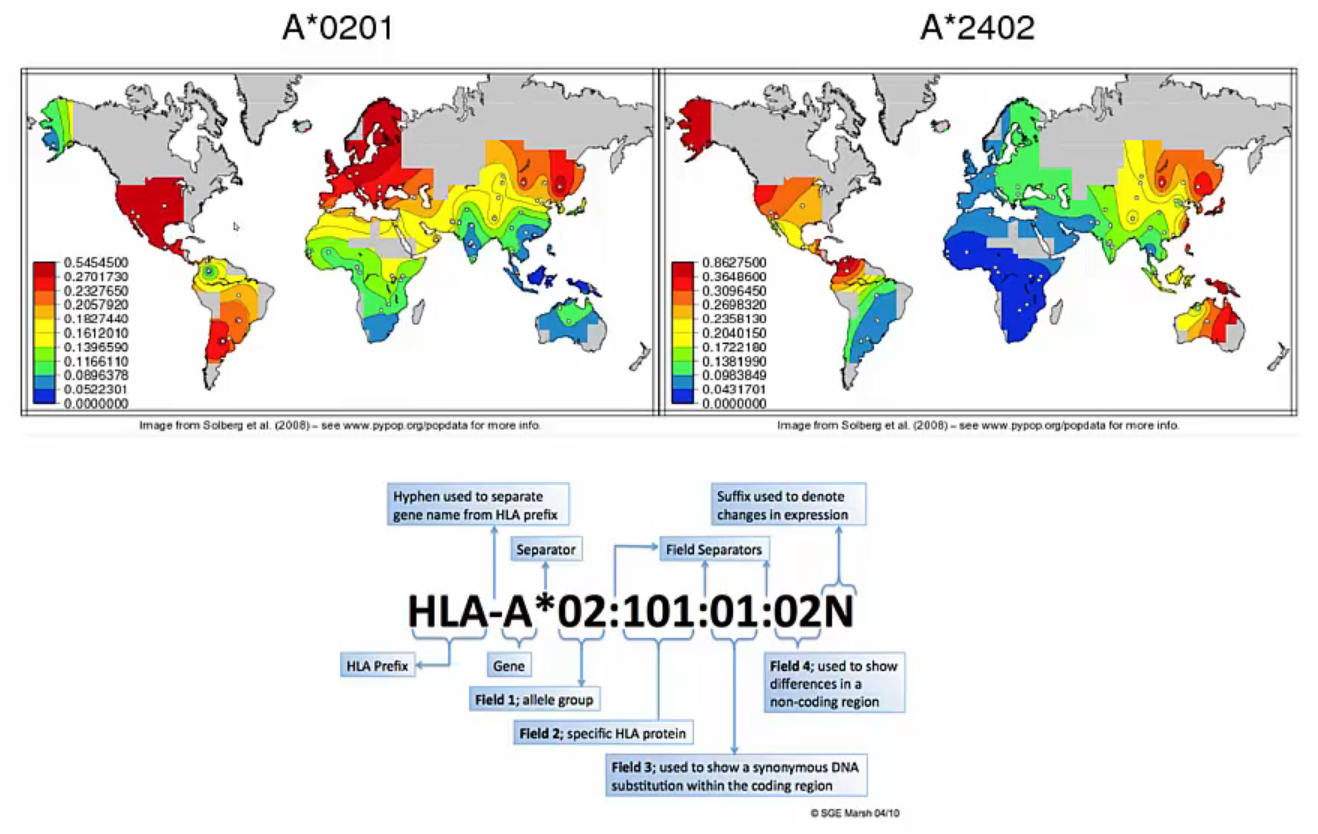 HLA Alleles are Ethnic Specific
HLA Alleles are Ethnic Specific
https://www.edwith.org/ngs-data-variation/joinLectures/356132
인종마다, 지역마다 사람의 HLA allele은 매우 다양한 분포를 보입니다. HLA 변이는 약속된 표기법을 따르는데 gene, allele group, specific HLA protein 등의 정보를 담고 있습니다.
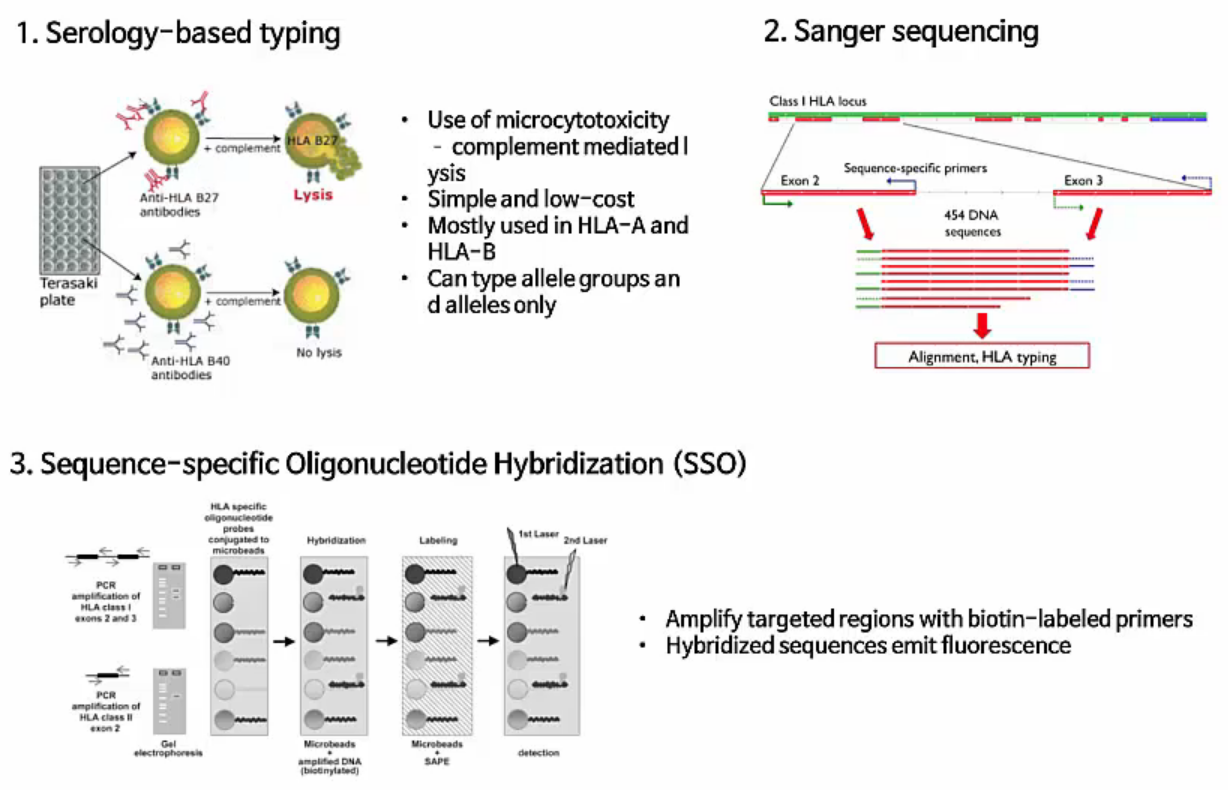 HLA Typing Methods
HLA Typing Methods
https://www.edwith.org/ngs-data-variation/joinLectures/356132
과거에는 실험적 방법이나 sanger sequencing, microarray와 유사한 방식은 sequence-specific oligonucleotide hybridization 등의 방법을 사용했습니다.
NGS 방식으로도 분석이 가능한데 다음과 같은 장단점이 있습니다.
Pros
- Use of (already) produced NGS-data
- No extra-cost
- Fast
Cons
- Short-read
- HLA genes are GC-rich: lower-sequencing coverage
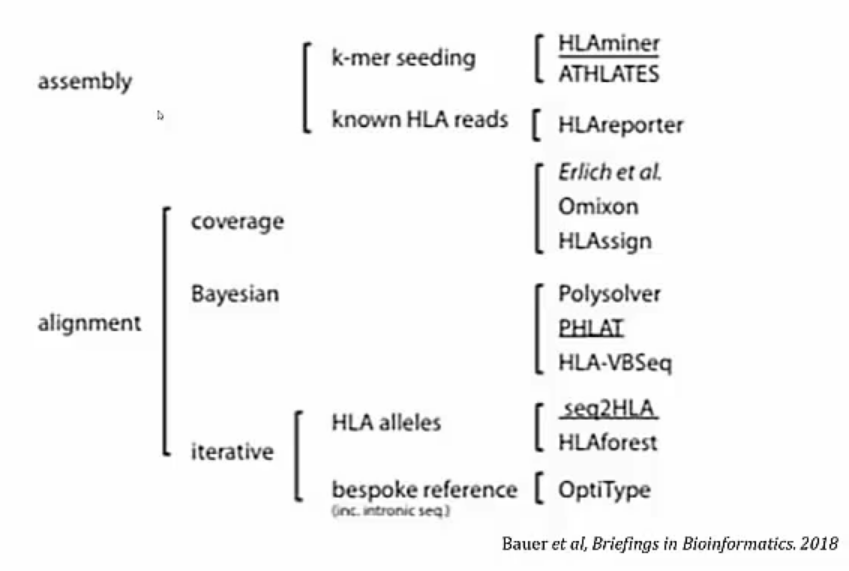 NGS-based HLA Typing Tools
NGS-based HLA Typing Tools
https://www.edwith.org/ngs-data-variation/joinLectures/356132
Assembly 방식과 alignment 방식의 analysis tool이 존재합니다.
MHC Binding and Immunogenicity
Neoantigen이 MHC와 결합할지 여부는 경우의 수가 매우 많고 mutation이 존재할 수 있으므로 예측이 매우 어렵습니다.
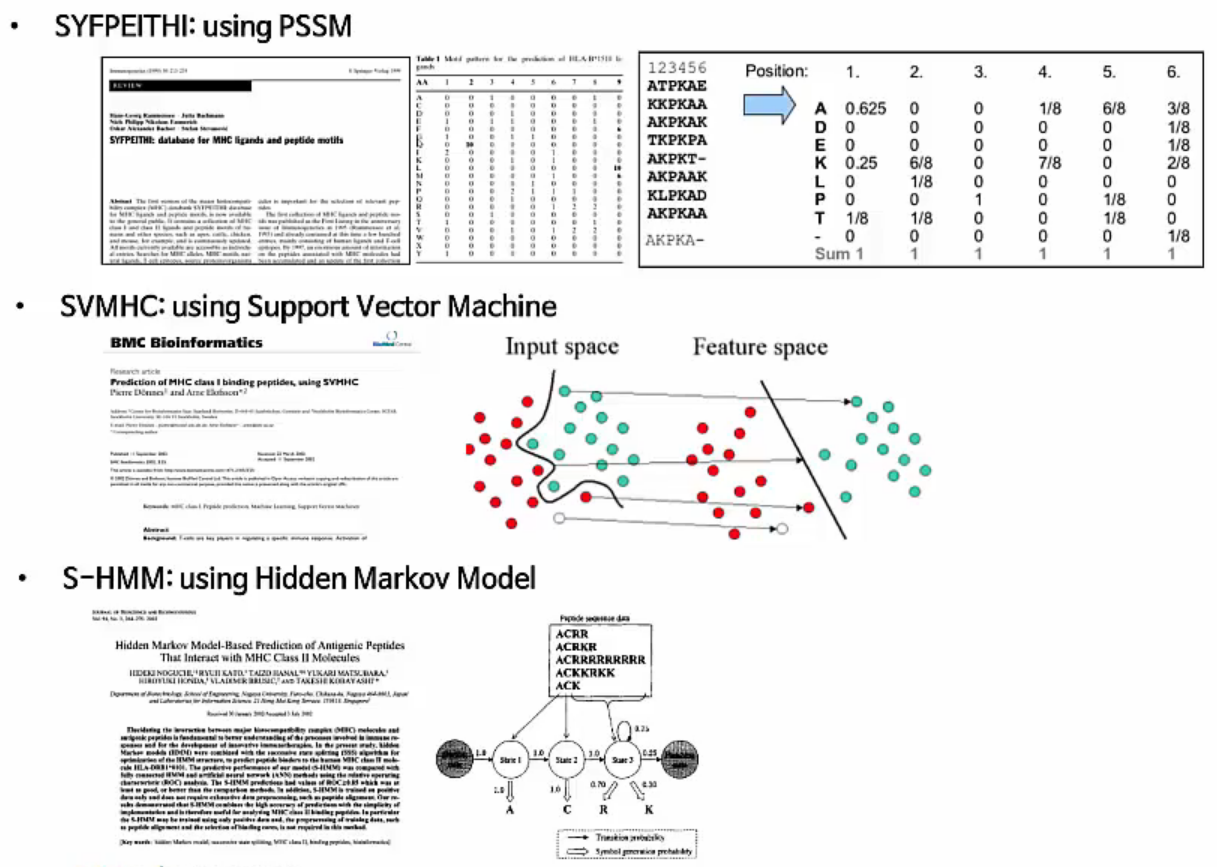 Prediction Algorithm
Prediction Algorithm
https://www.edwith.org/ngs-data-variation/joinLectures/356132
따라서 PSSM, SVM, HMM 등 기계학습을 이용하여 이미 알려진 antigen, MHC set data을 통해 학습하고 immunogenicity를 예측하는 알고리즘을 만들기 위한 노력들이 이어지고 있습니다.
Neoantigen Analysis & Integrated Pipelines
Tumor-Normal 시료를 input으로 사용하고 DNA, RNA NGS data를 생산하여 neoantigen을 확인할 수 있는 분석을 진행할 수 있습니다.
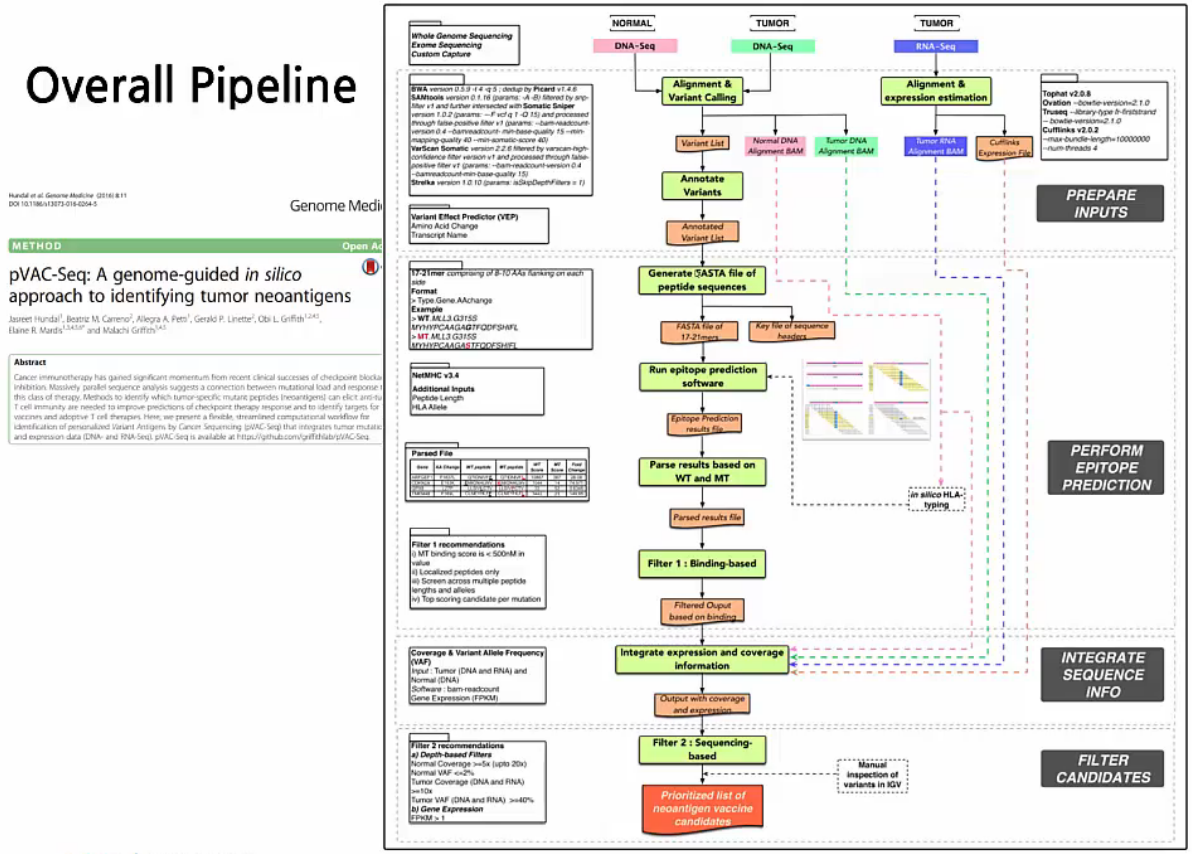 Overall Pipeline: pVAC-Seq
Overall Pipeline: pVAC-Seq
https://www.edwith.org/ngs-data-variation/joinLectures/356132
Take Home Message
NGS를 적용하여 cancer의 immunogenicity에 대한 분석을 할 수 있습니다. 관련된 분석으로는 TMB(Tumor Mutation Burden), HLA typing 및 변이, somatic mutation/neopeptide-neoantigen 후보군 예측 등이 있습니다. Personalized cacner immunotherapy를 위해서는 유전체 분석이 필수적입니다. 이를 통해 neoantigen, tymor microenvironment에 대한 정보를 얻을 수 있습니다.